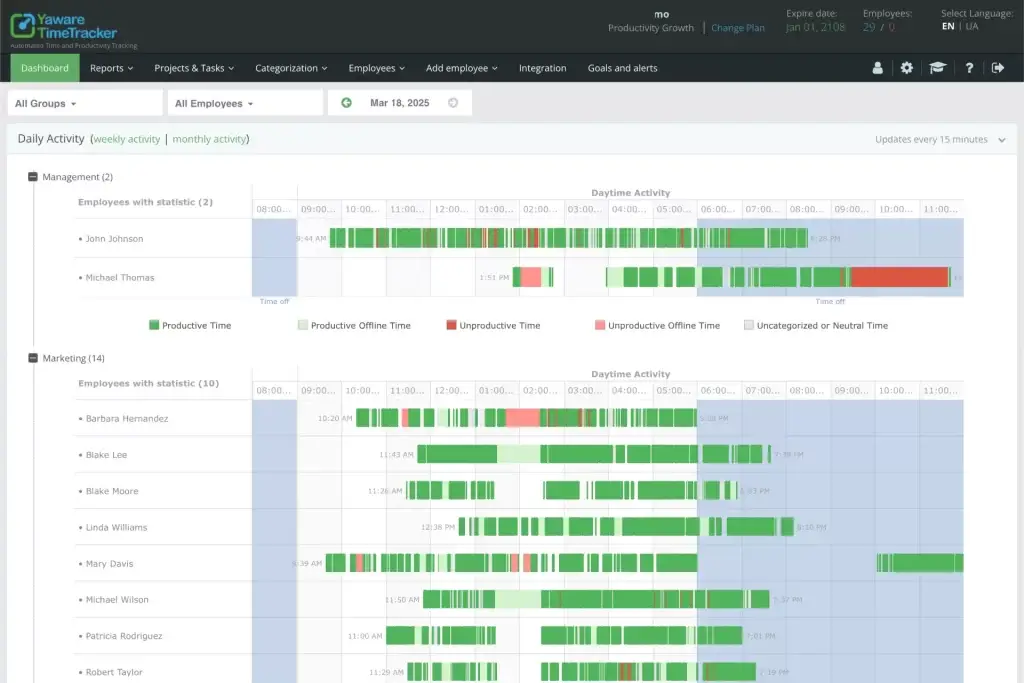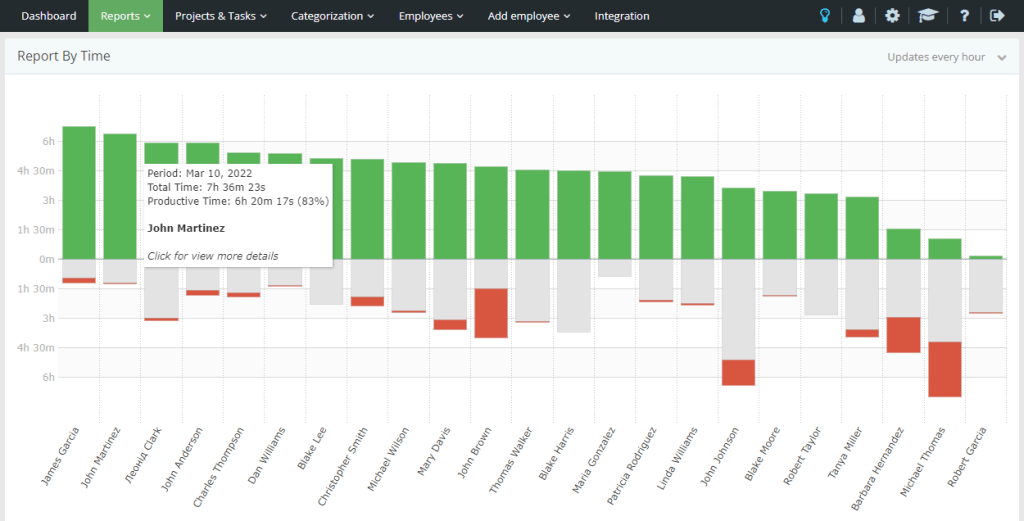Your team works hard, yet results remain inconsistent. This common disconnect has a solution: understanding how work time is actually used. According to Gallup, only 15% of employees are genuinely engaged at work, confirming that activity doesn't guarantee productivity. Time tracking software provides objective insights that transform team performance by highlighting hidden inefficiencies.
Why Time Logs Reveal True Work Patterns
Time tracking creates an objective record of how work actually happens, revealing critical patterns that explain productivity fluctuations. Deep work sessions strongly correlate with high-quality output, yet McKinsey research shows knowledge workers face interruptions every 6-12 minutes.

Time logs also expose the perception gap between estimated and actual time allocation. One study found developers believed they spent 70% of time coding, when tracking showed it was just 40%. This explains why hardworking teams struggle—their productive hours are fewer than everyone believes.
What Productivity Data You Should Track
Effective analysis requires specific metrics beyond basic hours logged. Based on implementations with dozens of teams, these five metrics deliver the most value:
- Task-to-completion ratio: Relationship between time invested and output produced
- Deep work percentage: Proportion of uninterrupted, focused sessions versus fragmented work
- Meeting efficiency score: Time spent in meetings compared to measurable outcomes
- Context switching frequency: How often team members shift between different projects or tools
- Peak productivity windows: Identification of optimal performance periods throughout the day
These metrics are powerful because they directly connect effort with results, revealing why similar tasks can take dramatically different amounts of time.
How to Set Baselines and Improve Focus
Start with 10 days of pure data collection to establish accurate baselines before making changes. After identifying your specific inefficiency patterns, target focus improvements. University of California research found it takes 23 minutes to regain concentration after an interruption, making focus protection a high-ROI intervention.
Implement these proven techniques to systematically improve focus:
- Time blocking: Designating specific calendar periods for focused work
- Communication protocols: Establishing team agreements about interruption thresholds
- Application consolidation: Reducing software sprawl to minimize context switching
- Priority alignment sessions: Ensuring team members focus on true high-value activities
- Outcome-based planning: Structuring work around deliverables rather than arbitrary time
Consistency is key—your 30-day framework should build new habits through daily reinforcement of these behaviors.
Case Example: 15% Output Boost via Time Audit
A marketing agency with chronic deadline issues implemented time tracking across their creative department. The data revealed designers spent 40% of their day on non-design activities that could be delegated or automated.

The team restructured workflows based on these insights: implementing daily deep work blocks, reducing meeting time by 30%, and reassigning administrative tasks. They also scheduled work types according to when team performance peaked for each activity.
Within four weeks, on-time delivery improved by 27%, client revisions decreased by 33%, and overall output increased by 15%—all while reducing working hours. Their success came from restructuring work based on objective data, not from working harder.
Start Your 30-Day Team Optimization Today
With the right tracking system and methodical approach, you can achieve measurable improvements in just 30 days. Yaware.TimeTracker provides the analytics tools needed to identify productivity patterns and optimization opportunities across your team.
Register today to begin your 30-day team optimization plan. Our guided implementation ensures you capture the right data and translate it into effective workflow changes without disrupting operations.
Transform how your team works by understanding how time truly translates to results—and build sustainable performance improvements based on data rather than assumptions.

